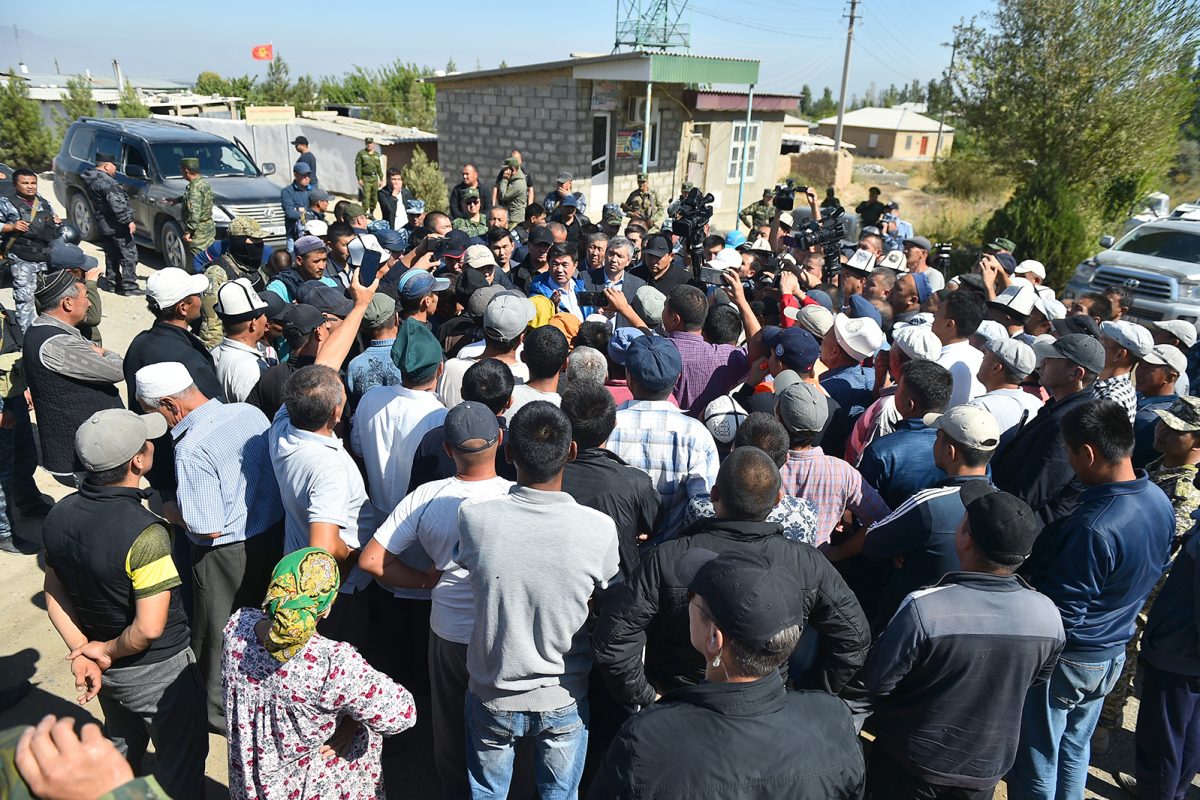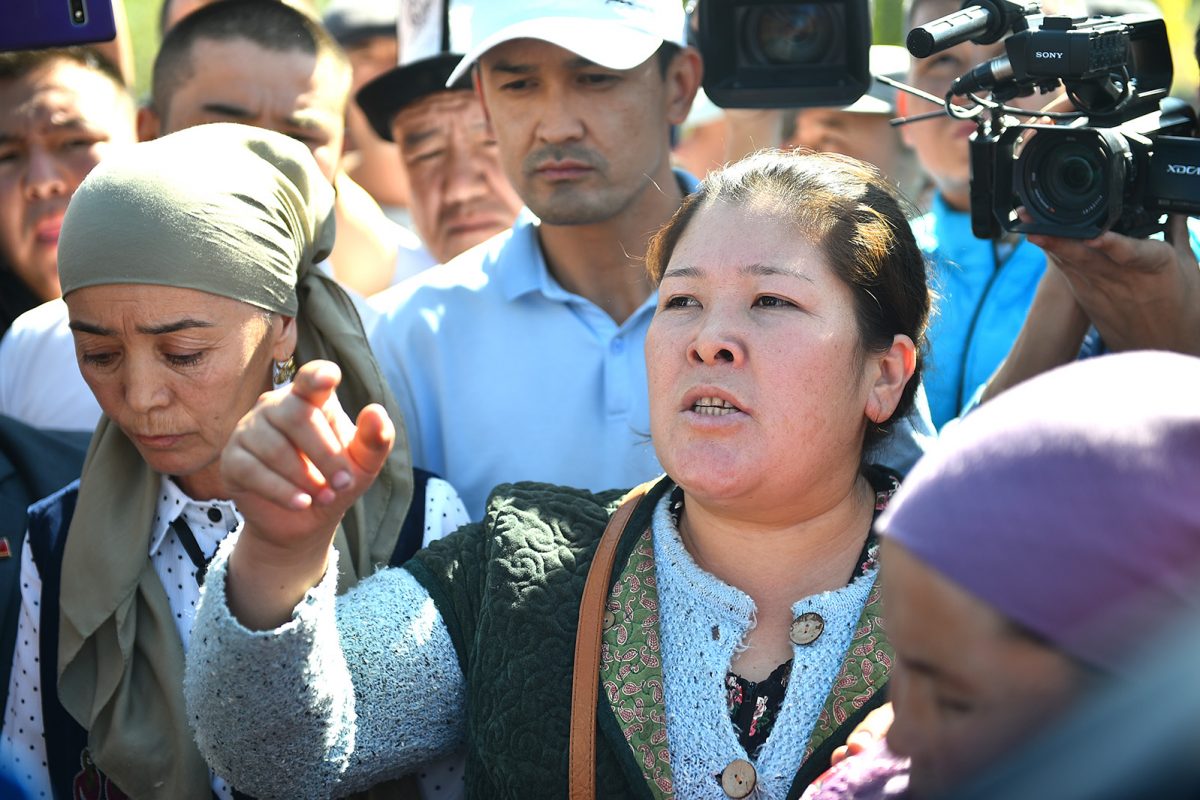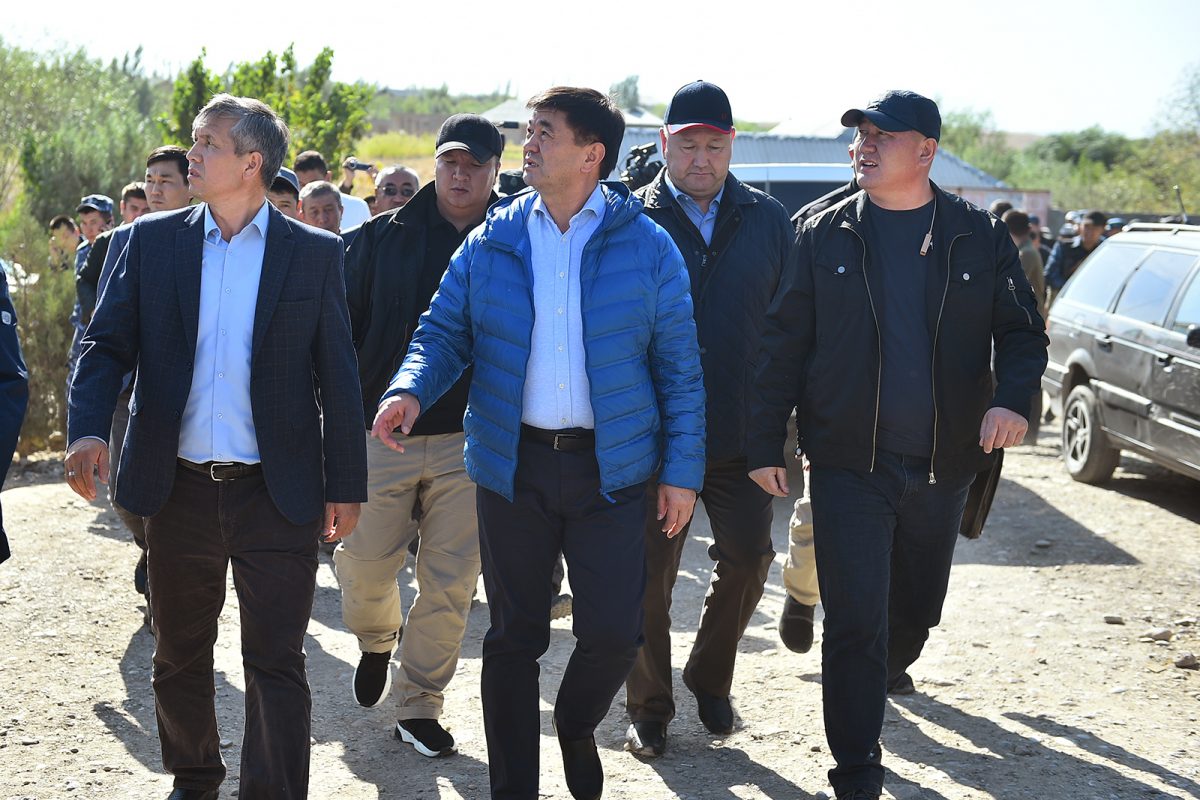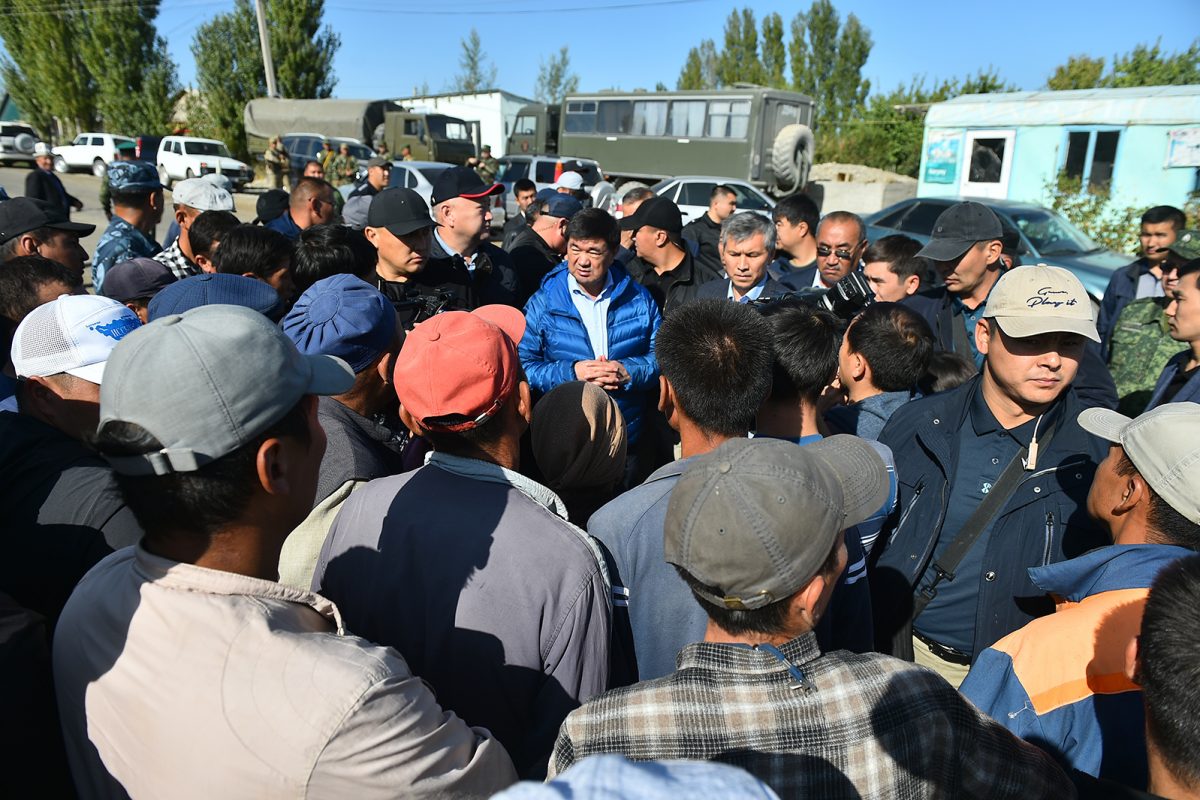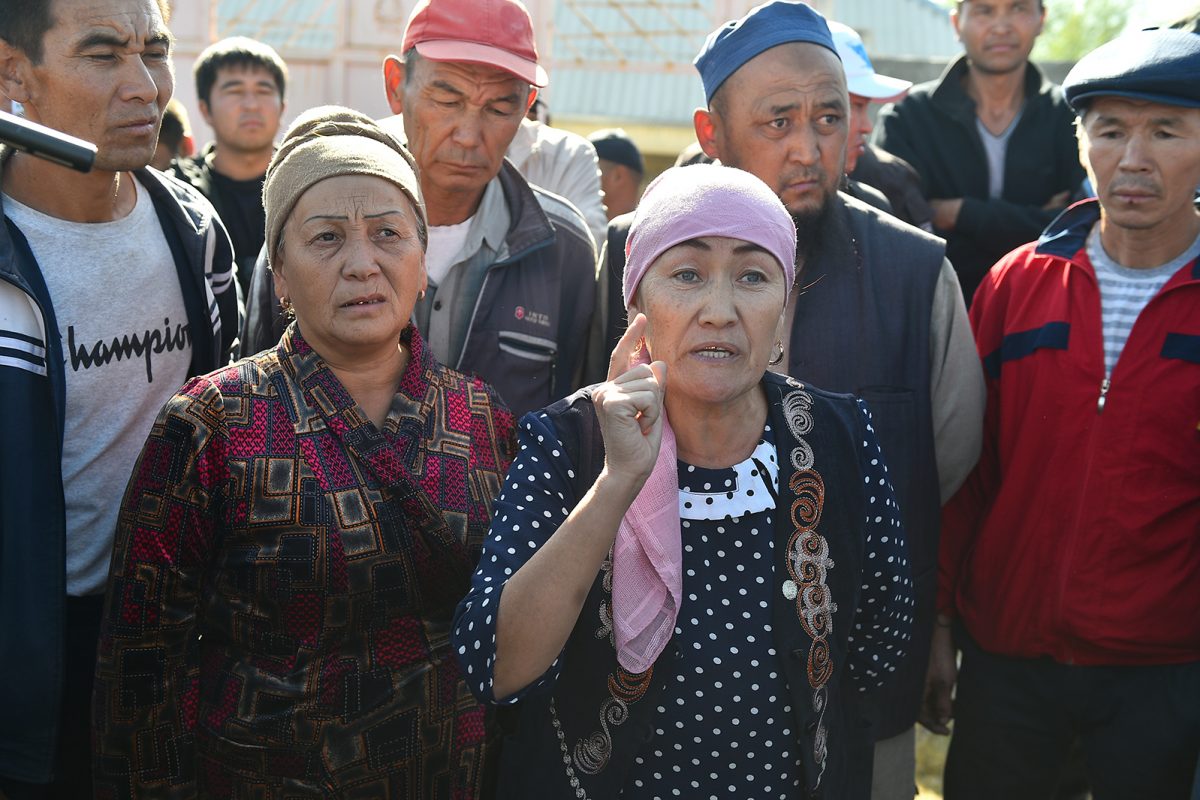Residents of border areas of Kyrgyzstan and Tajikistan are doomed to live in an atmosphere of onerous conflicts unless the leaders of the two countries have political will to finally settle this issue, according to experts.
Follow us on Facebook
The conflict in the village of Maksat in Leilek district of Batken region, Kyrgyzstan, occurred yesterday, September 16.
According to official reports, border services of both countries agree only in that the incident was triggered by construction works at the undocumented location. As for the rest, the versions of the agencies vary.
The conflict occurred in the border village of Maksat that belongs to the aiyl district of Kulundu, Leilek district of Batken region.

According to the Kyrgyz party, the citizens of Tajikistan launched construction works, and “in response, a citizen of Kyrgyzstan also started construction of the fence around his house that is located in that area.” The border service of Tajikistan claims the conflict was caused “by construction of an unknown structure by citizens of the Kyrgyz Republic.”
The demands to suspend construction turned into cross talks and then exchange of gunfire. The versions of official agencies about who opened the fire also vary.
“The Kyrgyz party was acting against bilateral treaties that delimit the frontiers of disputed territories and mobilised additional military forces of 250-300 officers. Then they committed acts of provocation and at 19:00 they opened fire on the unarmed citizens of mahalla Bahor,” according to the statement of the Border Troops of the State Committee for National Security of Tajikistan.

“The Tajik party was the first to use arms when it used squad weapon against the Kyrgyz border post Maksat, and then the temporary border post Sai in Leilek district of Batken region,” the Border Service of Kyrgyzstan reported.
According to the agency, one border guard died, and 13 Kyrgyzstanis suffered wounds and were hospitalised to the town of Isfana. There were seven military men and six non-militaries, including a child.
According to the Border Service of the Republic of Tajikistan, some citizens of Tajikistan received gunshot wounds. Asia Plus news agency with reference to the source in power department reported three dead border soldiers. Later on, the authorities of Sughd region confirmed this information to the Tajik service of Radio Liberty (Radio Ozodi). Also, deputy head of jamoat of Ovchi-Kalacha, Abdukhamid Odinaev, told Radio Ozodi about 12 wounded persons who were hospitalised.
“Not a unilateral process”
Prime Minister of Kyrgyzstan Mukhammedkalyi Abylgaziev visited the place of conflict. He held a meeting with the heads of relevant state institutions and also met with the residents of border villages.
Photo courtesy of the press service of the government of the Kyrgyz Republic
The head of the government said the settlement of border issues was a priority task, but emphasised it was not a unilateral process.
“The government will strengthen its work on delimitation and demarcation of the state border of the Kyrgyz Republic in order to coordinate all disputed areas as soon as possible and achieve the most positive shifts in resolving cross-border issues. We will direct all our efforts to solving cross-border issues taking national interests into account,” Abylgaziev said.
Also, by order of the speaker of parliament Dastan Dzhumabekov, a group of deputies led by vice speaker Mirlan Bakirov went to Leilek district of Batken region.

President of Kyrgyzstan Sooronbai Zheenbekov, speaking at the meeting on September 17 on the situation at the border, emphasised that further escalation of the conflict should not be allowed and public awareness should be raised among local residents. He also noted that “the situation should be settled strictly according to the international law and previously reached agreements, which was repeatedly noted during negotiations with Tajik President Emomali Rakhmon.”
Meanwhile, more than 750 residents were evacuated from Maksat village, 24.kg news agency reported citing local authorities. Reportedly, many of them were taken by their relatives from neighbouring locations. Some of the residents were placed to a school in the village of Eski-Oochu.
In Bishkek, the natives of Batken region attempted to hold a rally to express their discontent with the fact that the authorities did not settle the conflicts at the Kyrgyz-Tajik border. However, according to 24.kg news agency, police officers who arrived at the scene stated that rallies were banned temporarily.
Then they put forward a number of demands to the government. They also demanded to ensure transparency and openness of the activities of the border delimitation and demarcation commission, to give special status to Batken region and to stop the construction of facilities in disputed areas.
Disputed border
Border area conflicts between citizens of Kyrgyzstan and Tajikistan arise regularly. The length of the joint border of the two states is 976 kilometres and 472 of them have not yet been officially approved, which often causes misunderstandings between residents.
From April 4 to 6, 2019 in Dushanbe, government delegations of the two countries held a regular meeting on the delimitation and demarcation of the state border. And on March 13, an armed conflict happened between residents of the border villages of Ak-Sai and Vorukh because of the resumed construction of the Aksai-Tamdyk road diversion by Kyrgyzstan, which will connect Kyrgyz villages with the regional centre of Batken, bypassing the Tajik exclave of Vorukh.
The Tajik party believes the construction is carried out on the disputed section of the border, and also fears that residents of Vorukh may end up in transport isolation. Kyrgyzstan does not agree with these arguments.
This July 22, a conflict occurred between citizens of Kyrgyzstan and Tajikistan in Tort Kocho, near the village of Ak Sai. According to the Kyrgyz Border Service, the cause of the conflict was the installation of a flagstaff by residents of the Tajik village of Vorukh. Thus, they prepared for the arrival of President Emomali Rakhmon, who was supposed to meet with Sooronbai Zheenbekov in Isfara.

The meeting took place four days later. The presidents of the two states held talks with community representatives and the elders of village councils, and then continued negotiations in narrow format in Isfara.
“We suggest making the negotiation process more dynamic and effective. It is important to continue work on the issues of the Kyrgyz-Tajik state border according to the “from simple to complicated” principle. I am convinced that our joint efforts will make turn the borders into the gates of creation, peace and prosperity,” the press service of the leader of Kyrgyzstan quoted Sooronbai Zheenbekov.
The press service of President Emomali Rakhmon noted that it has historical significance and will bring countries closer to completing the process of the Tajik-Kyrgyz border delimitation and demarcation.
Expert: Problems May Be Settled by Mutual Concessions

A Bishkek-based expert, Asel Murzakulova, is studying the problems of the Kyrgyz-Tajik border. In the interview to CABAR.asia, she noted a few serious reasons that prevent both parties from taking actions designed to settle existing disputes at various sections of the Kyrgyz-Tajik border.
On the need for political will
A.Murzakulova: The border issue is a very sensitive topic, which has high political costs for Dushanbe and Bishkek. Recent events show that the parties do not exclude the heavy-handed approach, and in this regard, populism, that is, focus on a show of power, is still prevailing. However, this scenario is not new for the region. Just recently, back in 2000, the parties had already established checkpoints in disputed areas and had to gradually remove them; in some cases they had to do it under the pressure of local residents, in other cases as a result of bilateral negotiations.
Populism is an extremely calamitous option in such a sensitive issue as the border issue, and it is often used to hide a lack of political will. Political will implies mutual concessions, which can usually cause damage to one’s own interests in the short term, but allows gaining benefits in the longer term. Modern leaders are not ready to pay this price as it involves a loss of public support.
On the reasons of conflicts
It is not quite correct to say that conflicts occur only because borders are not defined. Border conflicts arise because local residents have no sense of security and no access to justice. The only authority they can apply to is border guards.
What do people need? They need security. Not the kind of security when they are asked to present their passports every now and then and when armed people become a routine rural life, but the kind of security related to traveling safely to a market, hospital, school without a checkpoint.
On the use of Soviet experience in border resource management and allocation
The key reason why it is difficult to use this experience is poor management. As this is a complex issue, which involves not only diplomats. We need to involve here water engineers and local authorities. That is, it should be a complex management. This complex management is totally ineffective now. Moreover, both countries have different models of natural resource management, and this asymmetry limits greatly the use of an integrated approach in the issue.
Today, all disputes focus on the imaginary border line, and in fact almost all important irrigation canals are cross-border, just like roads and other important infrastructure used by both countries.
Border areas need demilitarisation
The parties believe wrongly that order is maintained only by hard power. The more they think so, the more it happens. It is like a self-fulfilling prophecy. To demilitarise these zones, it is necessary to strengthen the joint work of law enforcement bodies and ensure access of local residents to fair justice. Here we need to have a kind of a permanent response team at the level of the ministry of interior affairs to investigate offenses in disputed areas. The fair work of this kind of group will have a big impact on reducing tensions. So far, the locals don’t have this opportunity.
Arming to the teeth seems more rational in a situation where no one is protecting you, when you feel constant threats. Then, of course, people begin to arm themselves. They feel injustice, in a vulnerable position. An integrated approach is needed here as there is no universal solution.
On the role of media of Kyrgyzstan and Tajikistan
The media should stop talking only about their victims; they need to raise awareness on the victims and losses on both sides. Journalists should not look for those responsible – they are not prosecutors to cover this information in their articles.
The role of the media is to provide unbiased information from the scene, maintain a balance of opinions. Journalists rarely present expert opinions, although the sober opinion of experts from both sides always helps to tune in to a constructive manner and demand negotiations, results, and progress from the state.
On the models of settlement of the issue: barbed wire or open streets
When we speak about settling these issues, we need to understand which models we focus on: the border, which is divided by a fence many kilometres long, or open borders like in the European Union? If we choose the second one, we already have a certain legacy in this issue, which must be kept.
This article was prepared as part of the Giving Voice, Driving Change – from the Borderland to the Steppes Project implemented with the financial support of the Foreign Ministry of Norway. The opinions expressed in the article do not reflect the position of the editorial or donor.



